
This parent guide supports parents in helping their child at home with the 8th grade Science content.
- Subject:
- Science
- Material Type:
- Reference Material
- Vocabulary
- Author:
- Kelly Rawlston
- Letoria Lewis
- Date Added:
- 10/11/2022

This parent guide supports parents in helping their child at home with the 8th grade Science content.

This resource accompanies our Rethink 8th Grade Science course. It includes ideas for use, ways to support exceptional children, ways to extend learning, digital resources and tools, tips for supporting English Language Learners and students with visual and hearing impairments. There are also ideas for offline learning.

This multimedia resource, part of the NC Science Now series, describes how researchers with the Appalachian State University Human Performance Lab are providing new insights into how even a small amount of exercise can cut the risk of disease in half. The study focuses on physical fitness and health of middle grade students. Components of this resource include a video and a related blog article. Links to these components are provided on the page under the heading "UNC-TV Media."

Students investigate how body mass changes as we change the amount of food we eat and the exercise we take.
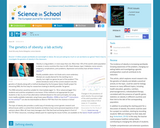
Students read an article that explores recent research into the genetics of obesity and then participate in a DNA extraction activity.

This lesson focuses on energy production in the body through the digestion of food. The concepts covered here involve the expenditure of energy from nutrition and cellular respiration, with a particular focus on the strenuous energy demands of marathon running. For the learning activities, students will design their own menu to prepare for the big race, with careful attention to prevent hitting the wall's situation caused by depletion of a glycogen source in the body during extreme activity.

Nanooze is a kid-friendly online magazine that explores nanotechnology. This issue covers current and future applications of nanotechnology to the detection and treatment of disease. Topics include nanotattoos, seeing inside the body, sequencing DNA, an interview with a nanoscientist, and teenier tinier tools.

Students will evaluate snack options based on the Nutrition Facts label.
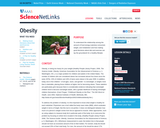
Students explore the relationship among the amount of food energy (calories) consumed, weight, and metabolism and how making good decisions about diet and exercise can lay the groundwork for a healthy lifestyle.
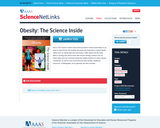
Part of The Science Inside series, this easy-to-read booklet discusses the importance of good health habits such as eating right and exercising. 77 pages
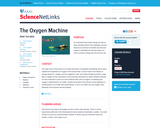
Students review the basics of respiration (breathing) and learn about the importance of oxygen to the human body as the fuel that allows our cells to produce energy from the food we eat.

This sequence of two lessons is designed to exemplify an argumentation approach to practical work, using an analysing and interpreting data framework. Students use primary data about heart rates and breathing rates, alongside secondary data from children and adults, to assess and argue for or against the validity of claims about physical fitness. They consider whether the evidence is sufficient in itself to support the claims, particularly when the sample size is small, or whether more data
is needed. They justify their decisions through argumentation.

This course was created by the Rethink Education Content Development Team. This course is aligned to the NC Standards for 8th Grade Science.

This course was created by the Rethink Education Content Development Team. This course is aligned to the NC Standards for 8th Grade Science.

This course was created by the Rethink Education Content Development Team. This course is aligned to the NC Standards for 8th Grade Science.
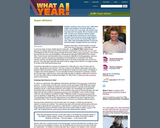
This article discusses the physiological demands on sled dogs who are running a race such as the Iditarod. It would be impossible for a human to complete this 1,000-mile race, even if it were done in chunks, with plenty of recovery time. Unlike humans, these sled dogs are able to maintain a high level of exercise for over two weeks without experiencing fatigue. Dr. Mike Davis, as explained in the article, is investigating how. The link between digestion and respiration is discussed as well as how this research may benefit humans with type 2 diabetes. A student worksheet is provided to guide student reading.
